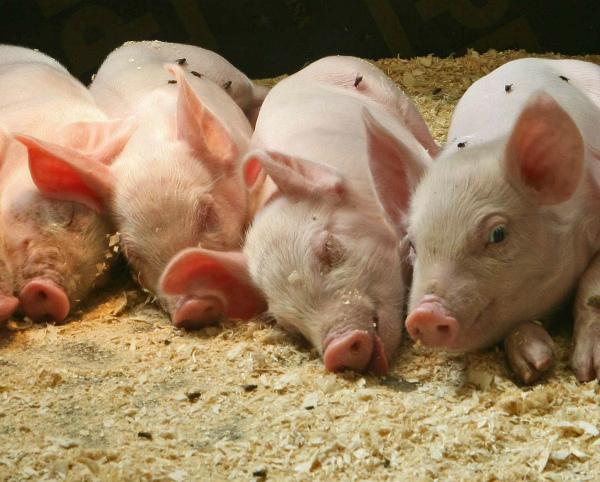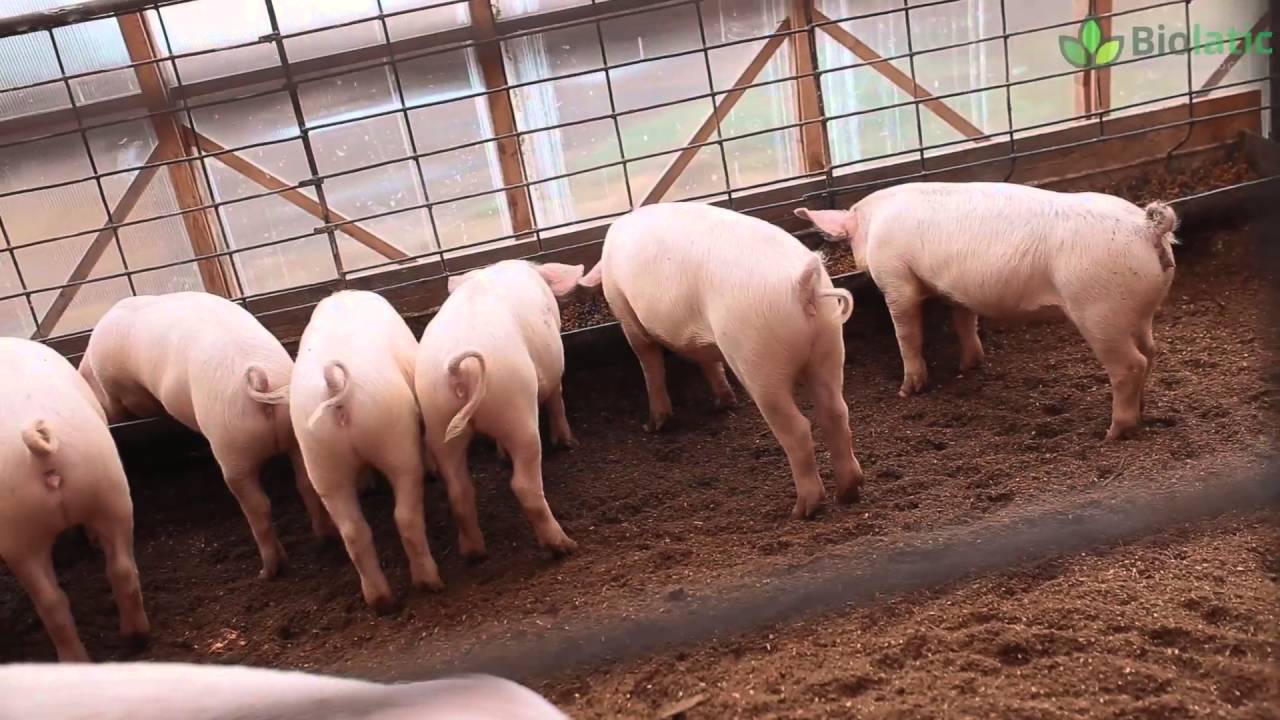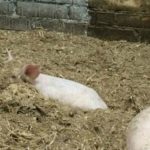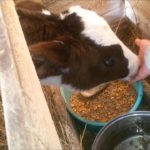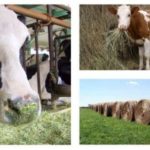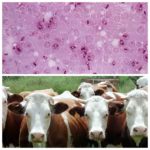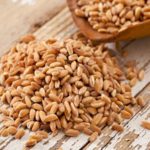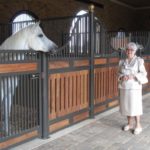Regardless of the type of livestock, the latter requires certain conditions for normal development. It takes breeders a lot of effort to create a favorable living environment, since it is necessary not only to ensure a constant supply of food and water, but also to clean up after the animals. The use of bacteria for bedding in the pigsty, which “digest” livestock waste, helps to make farmers’ work easier.
Description of technology
Bedding with bacteria (fermentation or deep) is a flooring made of straw (shavings or sawdust are also used) in which specially bred microorganisms are placed. The latter process animal waste products, so that the livestock's place of residence always remains clean. One of the features of fermentation beds is that all processes take place in the lower layers. Due to this, the surface of the flooring remains dry for a long period.
During the processing of waste products inside the pigsty, the temperature rises to +25 degrees. This allows pastoralists not to worry about the need to organize heating in the autumn-winter period.
The frequency of replacing bio-litter depends on the quality of the latter. Expensive products can be re-laid every three years. Budget options change more frequently. Moreover, the effectiveness of bio-litter directly depends on the number of living animals: the more livestock, the better the flooring works.
Advantages and disadvantages of use
The advantages of bio-litter include the following:
- ease of use (bio-litter is laid in almost the same way as conventional straw flooring);
- absence of rodents, since the pigsty is constantly maintained at high temperature and cleanliness;
- fermentation bedding is suitable for pigsties containing 3-5 or more animals;
- absence of unpleasant odor in the pigsty, as bacteria prevent the release of ammonia into the air;
- animals develop better because they are constantly warm and clean;
- there is no need to frequently change the flooring;
- old bio-litter can be used as fertilizer.
As already noted, fermentation bedding reduces labor costs and simplifies livestock breeding. But compared to straw flooring, this product is significantly more expensive. However, over time, the cost of bio-litter pays off.
Types of bedding
Fermentation litters are divided into several types, depending on the type of material in which the bacteria are “settled”:
- straw;
- from hay;
- from dried corn trunks;
- from moss;
- from feather grass;
- from the husks of sunflower and buckwheat seeds;
- from coarse wood shavings.
Expensive bio-litters are supplemented with organic substances, enzymes and amino acids. Such products process biological waste better.
Installation and operating rules
Fermentation litter with biobacteria is laid in several stages:
- The pigsty is completely cleared of old bedding and dried. Before laying bio-litter, it is recommended to whitewash and disinfect the room, removing the piglets from there.
- A bottom layer of hay or straw 20 centimeters deep is laid on the floor. Without this base, bio-litter does not work. Wood shavings can be used as a substitute for hay.
- Biobacteria scatter in an even layer over the surface of the straw (hay). The procedure is allowed to be carried out provided that the air temperature in the pigsty is not lower than +5-10 degrees (this limit is indicated in the instructions).
Bacteria must be dispersed, strictly following the instructions in the instructions. After completing the procedure, the litter should be watered with a small amount of water. Thanks to this effect, the bacteria wake up and get to work. After this, the litter is turned so that the microorganisms are evenly redistributed among the layers.
Bran, which needs to be scattered at the same time as the powder from the jar, helps speed up the growth of bacteria. Thanks to this, microorganisms will immediately receive food. To save money, it is recommended to scatter the bacteria in the area where manure usually remains.
Microorganisms begin to “work” in full force a few days after scattering. This is due to the fact that by this moment the piglets have compressed the top layer of straw (hay). In the future, the litter must be turned periodically.
It is also recommended to add a small amount of biobacteria. This approach will ensure a continuous process of processing pig waste products.
The bioflooring should be changed either after the expiration date (indicated on the packaging) or at the moment when the straw becomes wet (no longer absorbs moisture). After the expiration date, the litter acquires a dark (black) shade.
Pig bedding care
Caring for litter with bacteria does not require much labor. As noted, to maintain conditions suitable for the development of microorganisms, it is enough to periodically stir the straw with a pitchfork. Due to this, the temperature of the lower layer, where the heat generated during manure processing accumulates, will decrease. Also, after tedding, the accumulated moisture partially evaporates. Due to this, the straw below does not rot.
The waste material is allowed to be used as plant food. Before applying such fertilizer to the ground, straw with biobacteria should be placed in a compost pit for several days and allowed to rot there.
Is there any benefit to fermentation bedding?
The benefits of using fermentation mat become noticeable in the first year.Thanks to this product, there is no need to frequently change the straw (hay) in the pigsty, which is especially important for those who keep more than five animals. Biomaterial has to be re-laid once a year (and expensive ones - every three years).
The second advantage of fermentation bedding that livestock breeders pay attention to is that the air temperature in the pigsty does not drop to low levels even in winter. This reduces the cost of organizing a heating system and installing additional materials on walls and floors.
The payback period depends on the type of bio-litter and place of use. If the material is laid in large premises where several pigs are kept, then the cost of purchasing the flooring will be refunded within the first months. Over time, due to increased animal productivity, biolitter will become an indirect source of additional income.


